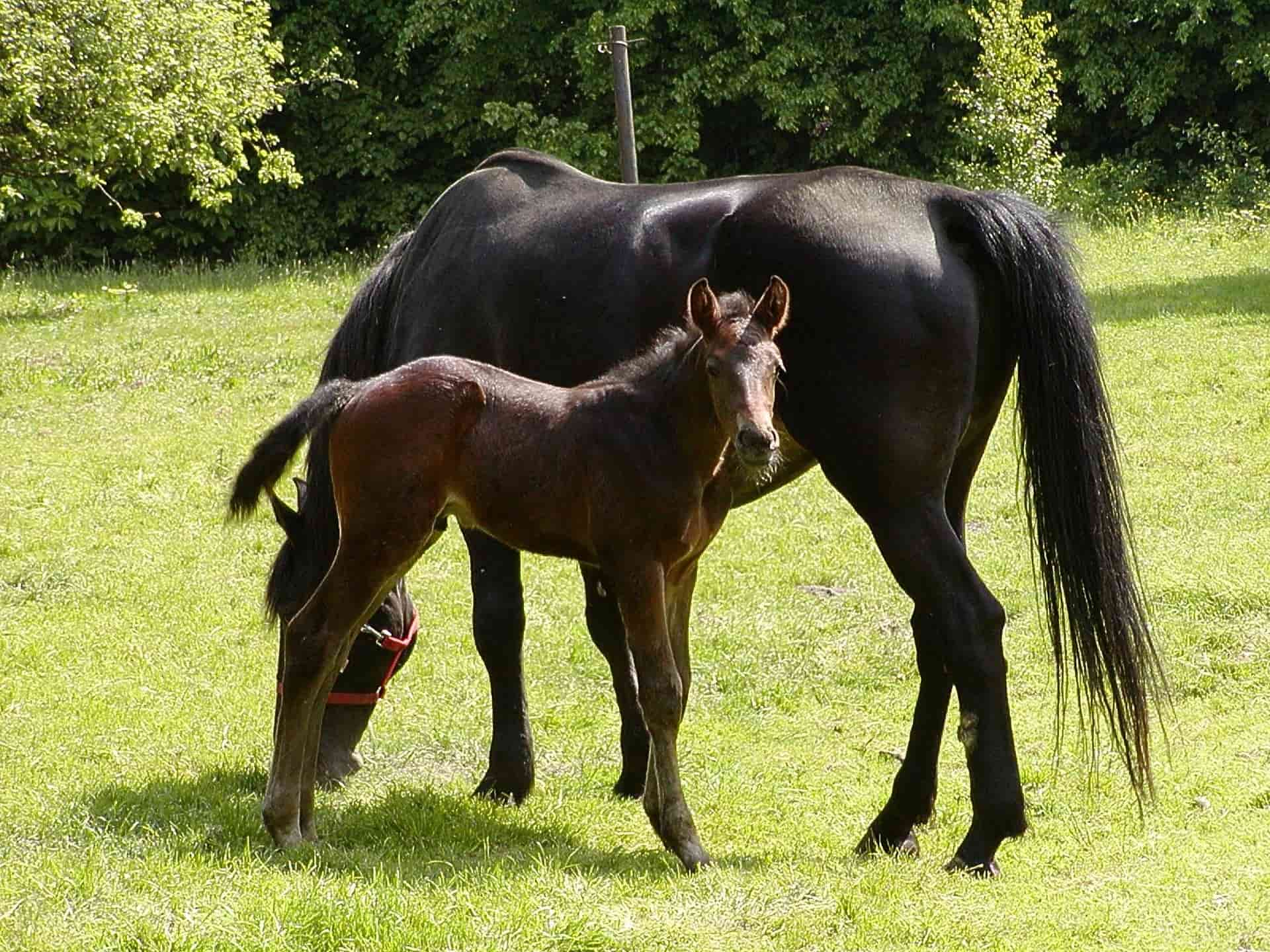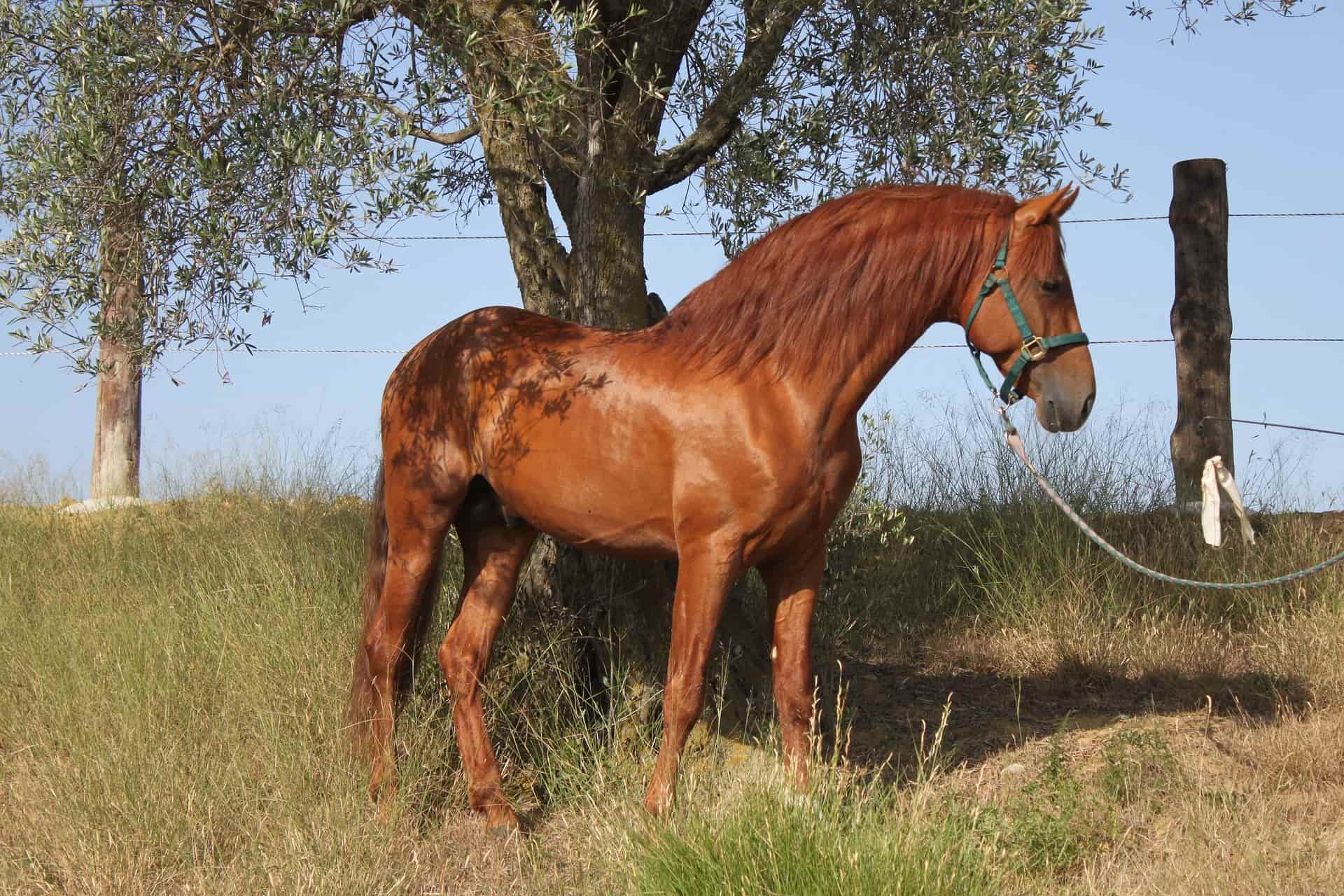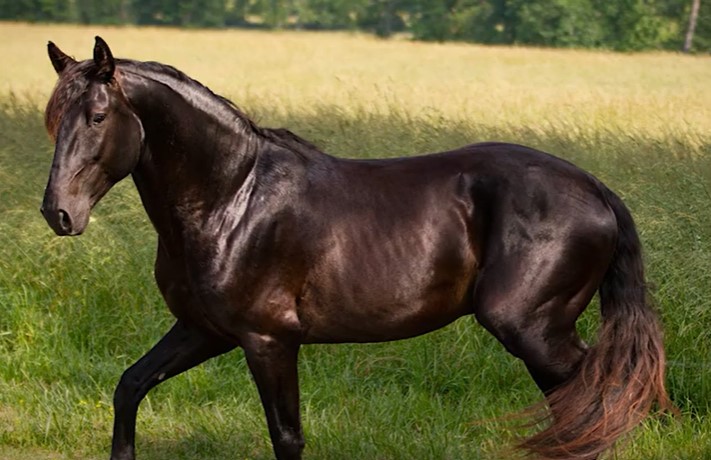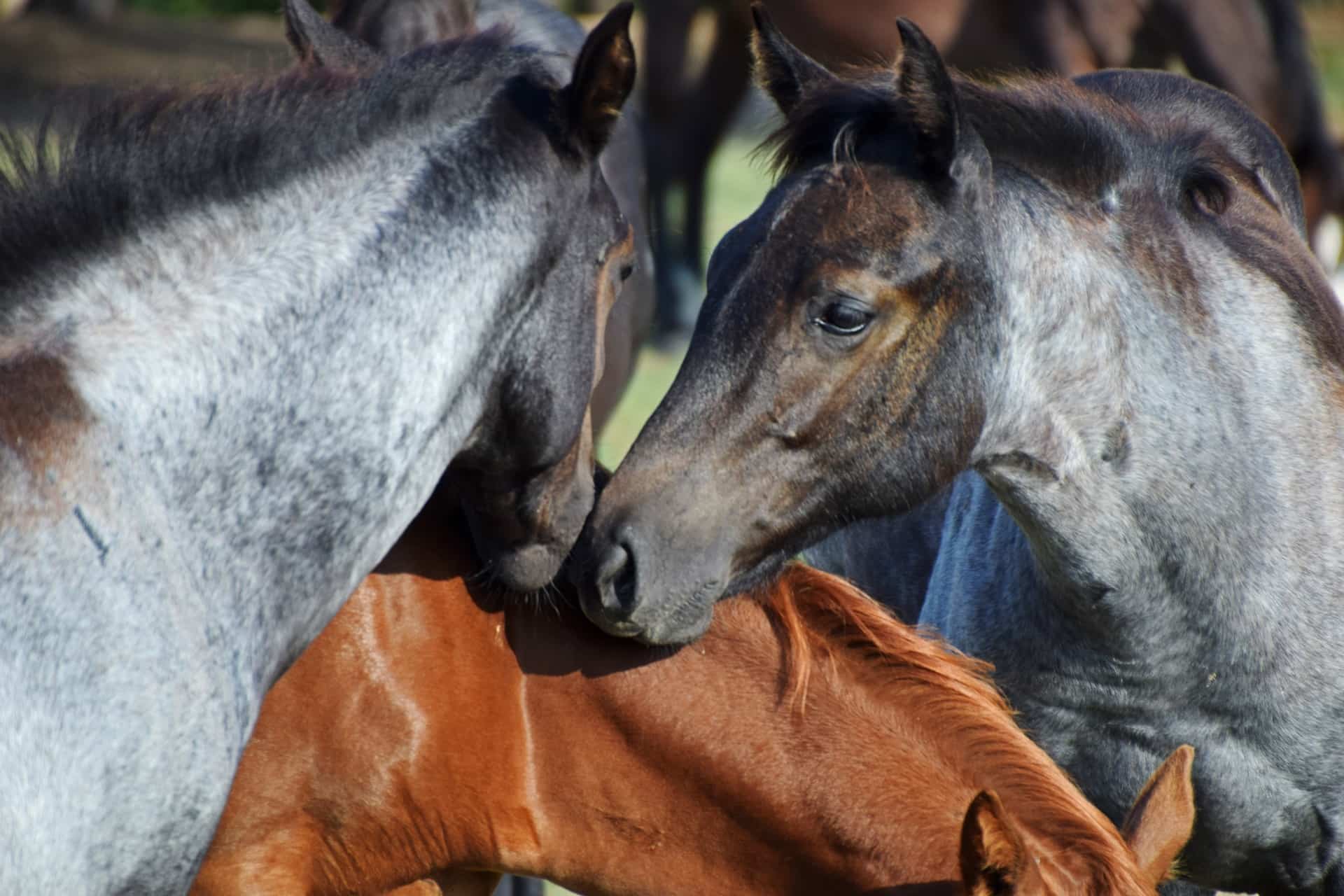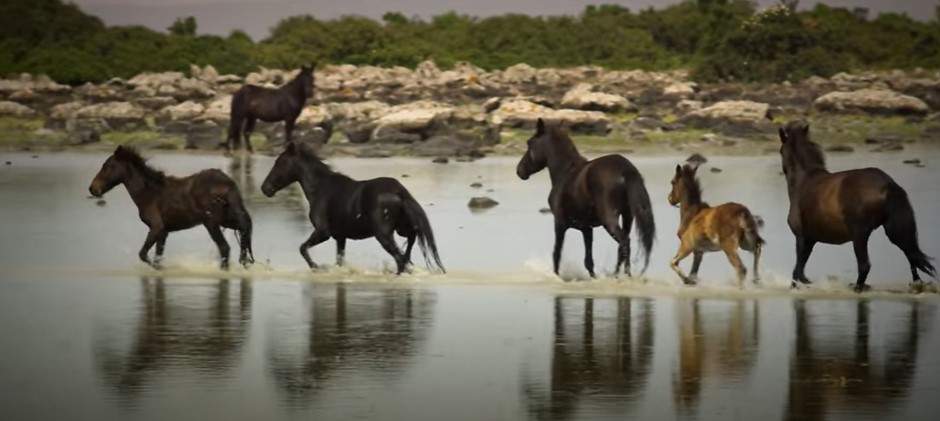Beer. Bread. Sausages. There’s no doubt that German cuisine is known worldwide. What many don’t know is that Germany is also home to the most beautiful horse breeds.
It hosts some of the oldest sites that contain evidence of domesticated horses. And, these horses run the gamut in terms of weight, height and coat color.
Initially, most of them were bred for agricultural applications. But, they now participate in multiple disciplines ranging from eventing to show jumping, dressage, combined driving and more. Here’s a detailed look at common German horse breeds.
Most Popular German Horse Breeds
German Warmbloods
German warmbloods tend to have a fairly similar set of traits. For instance, they thrive in equestrian sports.
Furthermore, their studbooks aren’t as restrictive as those of the coldblood varieties. Due to this, you’ll find the majority of German warmbloods mingling. On that note, it’s not unusual to encounter a Bavarian warmblood with Hanoverian genes even though it bears the Bavarian brand.
However, this intermingling also makes some of these horses vulnerable to health problems. To err on the side of safety, ensure you seek veterinary guidance before purchasing them.
The average height of these German warmbloods typically ranges from 61 to 65 inches. This is not surprising considering its the standard height for horses that participate in dressage, show jumping, eventing and more.
And although these breeds come in different colors, solid colors – such as brown, bay, chestnut and black horses – are the most preferred. Here’s a list of German breeds described as warmbloods.
1. Westphalian
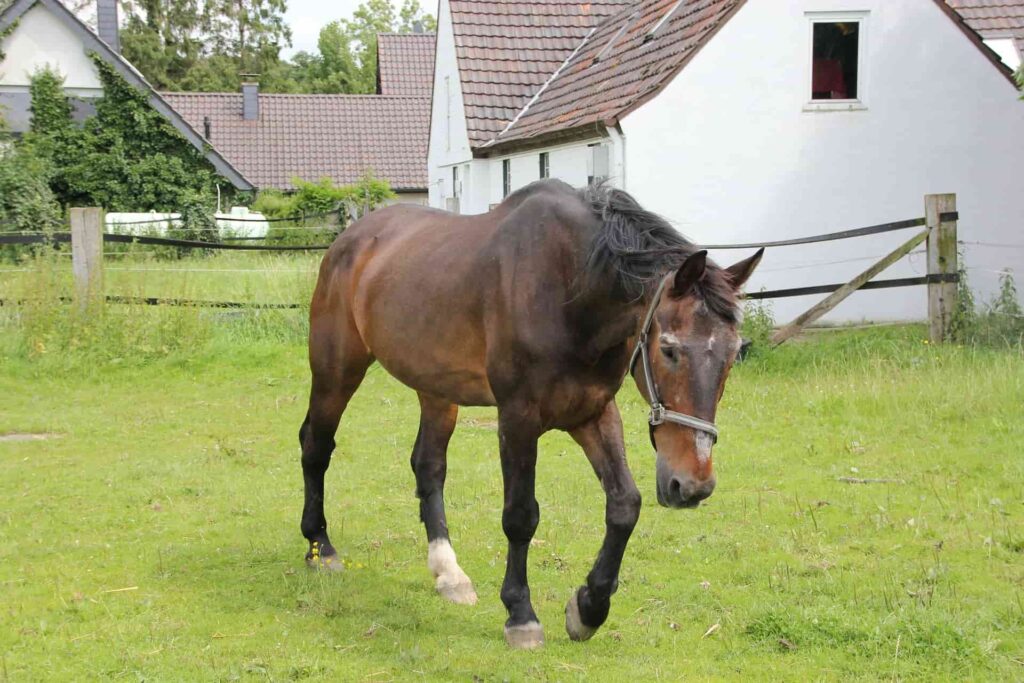
- Height: 62 to 70 inches
- Weight: 1000 to 1300 pounds
- Characteristics: Medium-long back, powerful hindquarters, high-set tail, short legs
The Westphalian is a popular German warmblood horse. The intent behind its development was to create a well-rounded breed that could serve the people of East Prussia. But at first, the Westphalian was mainly used as a lighter riding horse.
As the population of this region increased, the need for working horses grew. Due to this, these horses became more utilitarian. However, most people still preferred the Rhenish Cold Blood for farm work. Being a heavy draft horse, it was better at pulling plows and artillery.
When mechanization was introduced, the Westphalian became more of a recreational animal. Currently, this breed excels as an athletic riding horse.
Since it has a great balance of temperament and athleticism, it makes an excellent dressage horse. It’s also used in disciplines like eventing and showjumping.
If you’re looking to buy a Westphalian, you’ll be pleased to learn that it comes in all equine colors. However, the most popular ones are bay, chestnut, black and gray.
2. Heck Horse
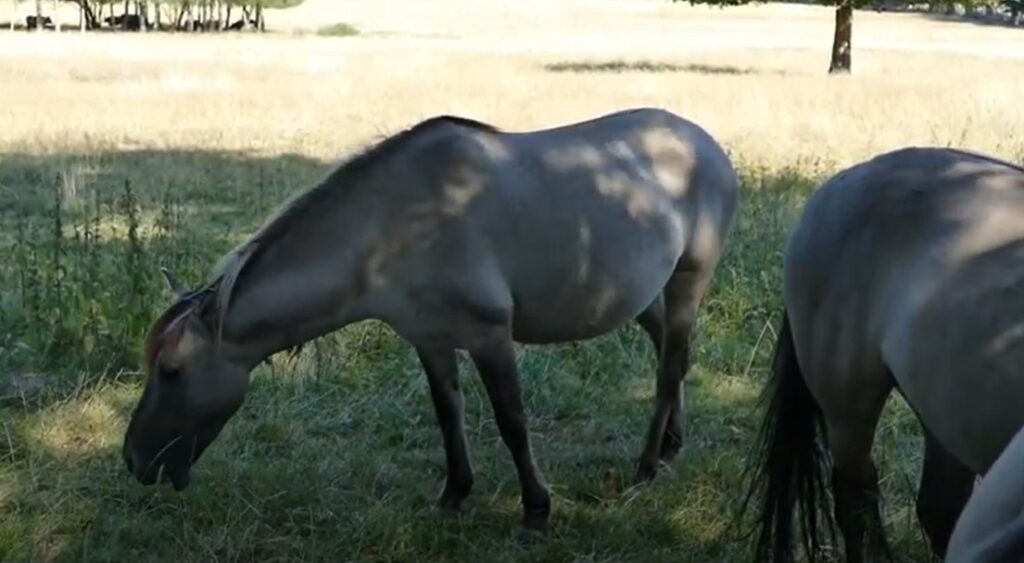
- Height: 49 to 53 inches
- Weight: Unknown
- Characteristics: Big head, low withers, robust hindquarters and legs with primitive markings
Right off the bat, you’ll notice that this breed has a unique name. It’s named after the two zoologist brothers who developed it: Heinz and Lutz Heck. Their objective at the time was to restore Tarpan horses that became extinct in 1879.
To achieve this, they cross-bred the Icelandic horse, Kinik and Gotland with Przewalski’s Horses. This resulted in the Heck breed that we see today, standing between 49 and 53 inches.
It’s rare to find Heck horses in colors different from dun or grullo. These horses are also easy to identify through the primitive markings that can be either horizontal mark or dorsal stripe on their legs. These horses are suitable for driving and riding applications and is considered a rare German horse breed.
3. Holsteiner
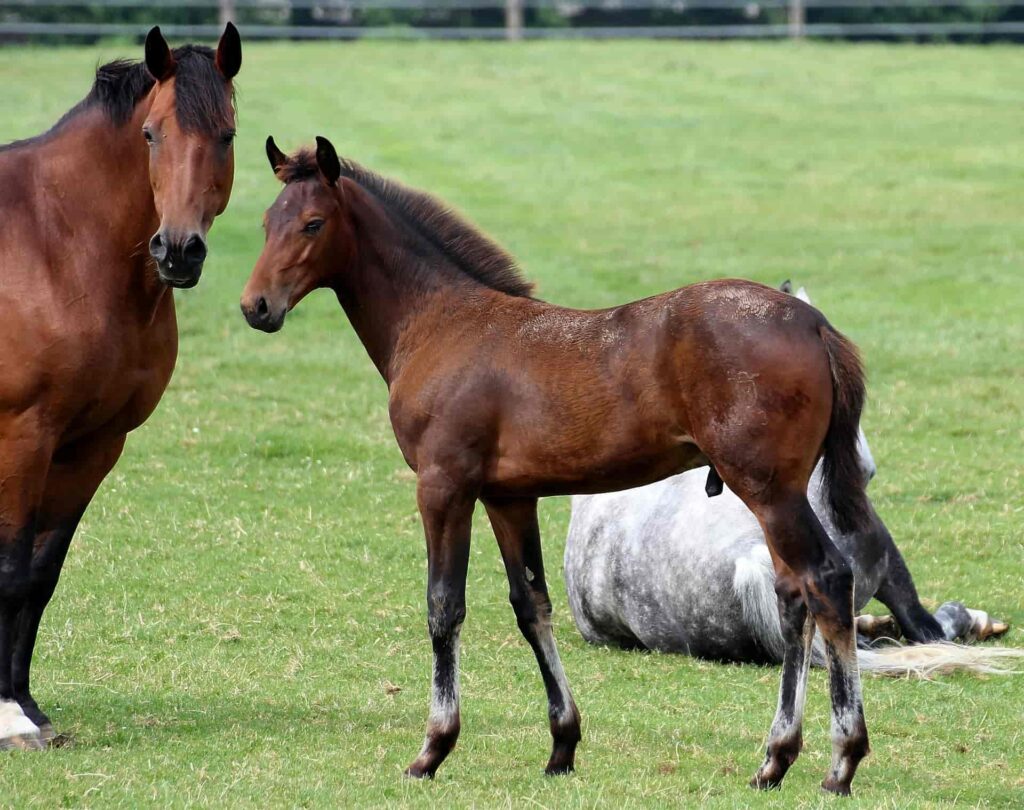
- Height: 64 to 68 inches
- Weight: 1500 pounds
- Characteristics: Arched and high-set neck, refined head, compact body with expressive movements
Among all warmbloods, the Holsteiner is believed to be Germany’s oldest breed. Evidence records of Holsteiners were first discovered at a monastery around the 13th century. These records were found in Schleswig-Holstein, situated in northern Germany.
By the time the 15th century rolled around, monks had started developing cavalry horses that could also be used for farm work. Later on, some of these horses were shipped to France (see our favorite French horse breeds) and used as war horses in the Napoleonic battles.
This goes to show that Holsteiners were extremely versatile horses from the get-go. From serving as a carriage horse to fighting wars and pulling heavy loads, there’s nothing these animals couldn’t do.
But presently, they’re mainly used for equestrian sports due to their athleticism. They take part in show jumping, dressage and combined driving.
Also important to note is that they’re lighter than their ancestors at the monastery, owing to the introduction of Arabian and Thoroughbred bloodlines.
4. Hanoverian
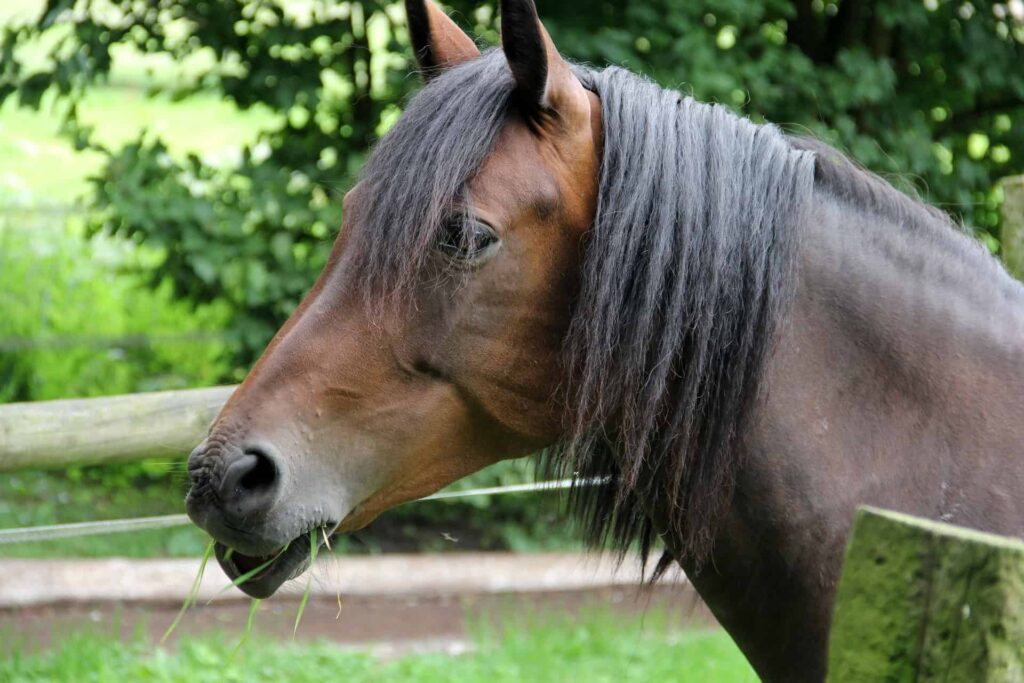
- Height: 63 to 69 inches
- Weight: 1433 pounds
- Characteristics: Straight head with tiny ears and clear eyes, slender but stocky neck, deep chest
The Hanoveraian dates back to the early 1700. King George, who was the ruler at the time, decided to reinforce trade ties between Germany and England.
As a result, horse owners started trading their breeds freely. It is during this period that breeders decided to refine German coach horses by introducing the Cleveland Bay, Yorkshire and Thoroughbred coach horses.
This resulted in two different varieties of this high-class coach horse, that is, light and heavy.
The heavy horses were bred specifically to serve in the military to help pull carriages. However, the light warmblood horses were used as cavalry mounts. To date, the Hanoverian is an exceptional driving and riding horse.
However, they’re very versatile; hence, popular in equestrian sports such as dressage and show jumping. Also, these horses are available in different colors such as gray, chestnut and bay.
5. Brandenburger
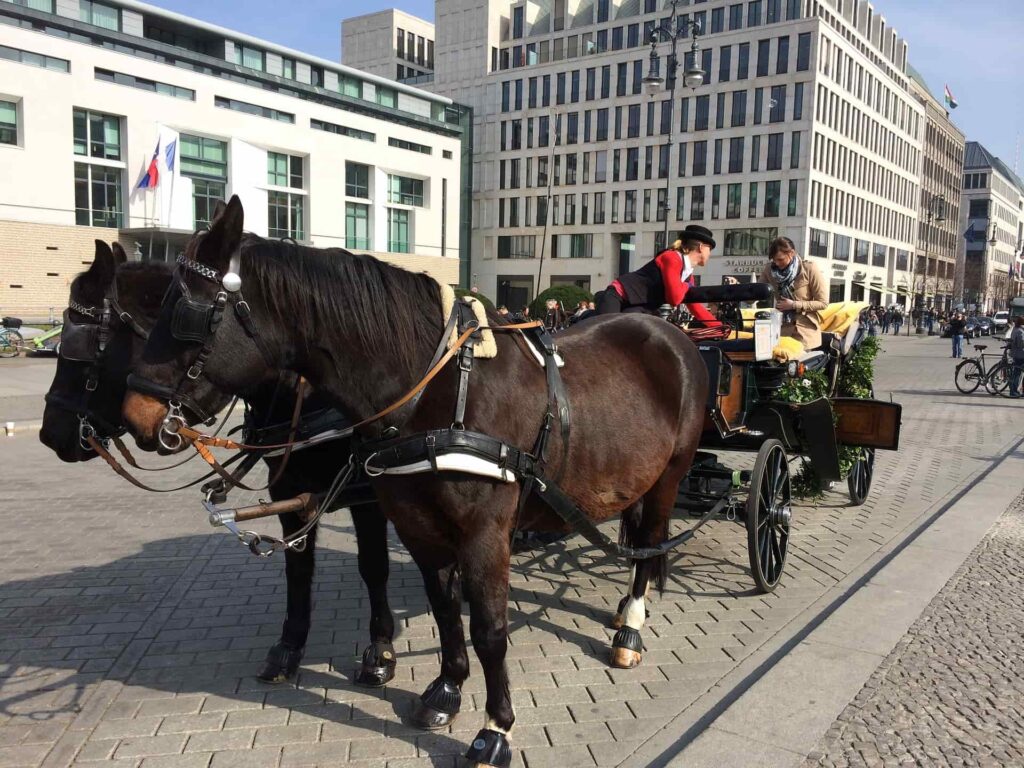
- Height: 64 inches
- Weight: Unknown
- Characteristics: Medium head with a nicely-set neck and a long back; mainly come in a bay color
The Brandenburger dates back to the 15th century. However, it wasn’t until in 1788 when conscious efforts were made to refine the qualities of this German breed. King Frederick Wilhelm II spearheaded these breeding efforts.
Specifically, the Brandenburger was crossbred with the Trakehner horse, Thoroughbred and Hanoverian. The mixed breeds resulted in a powerful sport horse with a friendly disposition.
This explains why Brandenburgers are used for pleasure riding and competitions. The light warmblood breed particularly thrives in combined driving, eventing, show jumping, and dressage.
6. Bavarian Warmblood
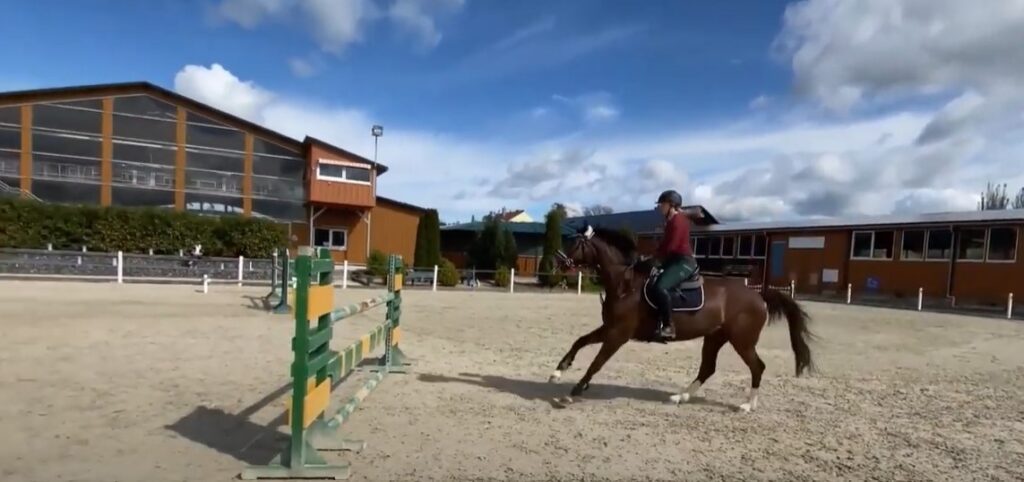
- Height: 62 to 66 inches
- Weight: 1300 pounds
- Characteristics: Athletic build, rhythmic gait and agreeable disposition
The Bavarian warmblood owes its heritage to an ancient breed called the Rottal or Rotaller. The Rotaller served as a carriage horse.
Like its ancestor, the Bavarian warmblood originates from south Germany, where it was used as a sport horse. This is because it had an elegant movement and athletic capability.
A breeding organization known as the Bavarian Regional Horse Breeders’ Society is credited with the creation of this breed. They bred the Bavarian with the goal of producing a riding horse good enough to participate in Olympic sports.
Like many breeds classified in the warmblood category, the Bavarian is now used in equestrian activities like dressage, show jumping and eventing.
7. Zweibrucker
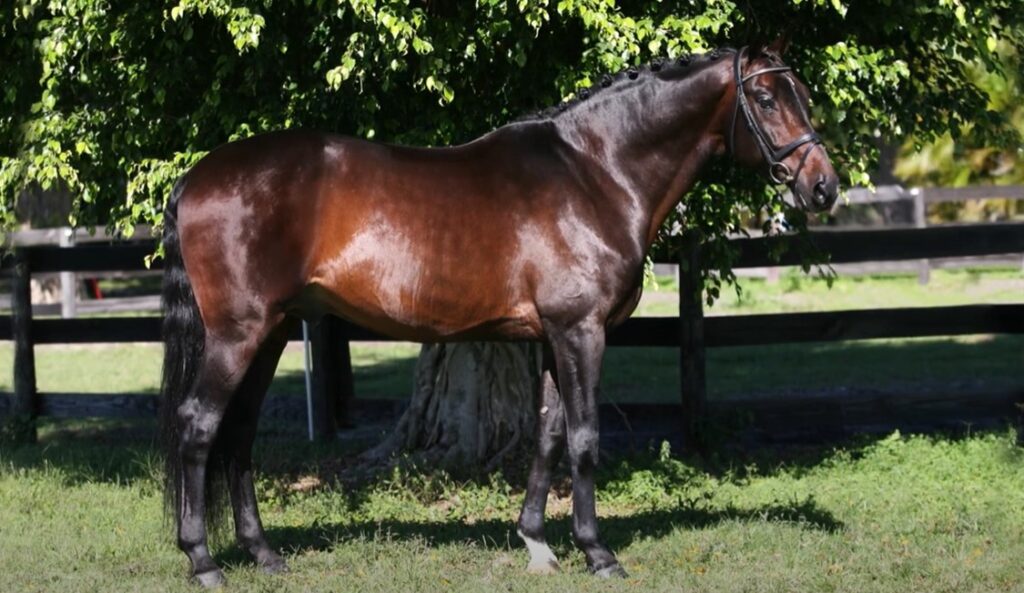
- Height: 64 to 68 inches
- Weight: 850 pounds
- Characteristics: medium long neck, a long, muscular back, hard and nicely-proportioned hooves with bay, gray or chestnut coats
The Zweibrucker is one of a handful of German sport horses revered for their graceful movements and versatility. The breed was produced in Zweibrucker state stud, established back in 1755.
These horses were crossed with other breeds in a bid to refine their qualities. This practice carried on until in 1801 when the farm was relocated. At around that time, Napoleon came across the breed and was very amused by it. So he revived the stud in 1806.
Over the years, breeders experimented with different breeds to produce the Zweibrucker that exists today. These horses were crossbred with Thoroughbreds, Arabians, Trakehner, Holsteiner and Hanoverian.
Given its amicable and warm temperament, Zweibrucker horses are commonly used for riding, combined driving, dressage and in the military.
Another crucial point to note is that these horses come in multiple colors. Most have the usual chestnut, bay or gray coats. However, a few are tobiano pintos and as such their coats are buckskin, palomino or cremello.
German Coldbloods
Germany is also famous for producing popular coldblood breeds such as:
8. Rhenish German Coldblood
- Height: 60 inches
- Weight:1860 to 2200 pounds
- Characteristics: Mid-sized head, strong neck and body, muscular limbs with sturdy joints and hard hooves; also have chestnut or roan coats
This is a breed of draft horse developed in the Rhineland region of western Germany. The Rhenish German Coldblood was bred in the 2nd half of the 19th century. Its development took place primarily at the Prussian state stud.
The goal at the time was to create a powerful working horse. Specifically, one that could put up with the region’s climate and work its heavy soil. This is how the Rhenish German Coldblood came about. It’s a robust draft breed that can weigh over 2,000 pounds and stand 60 inches tall.
9. Black Forest Horse
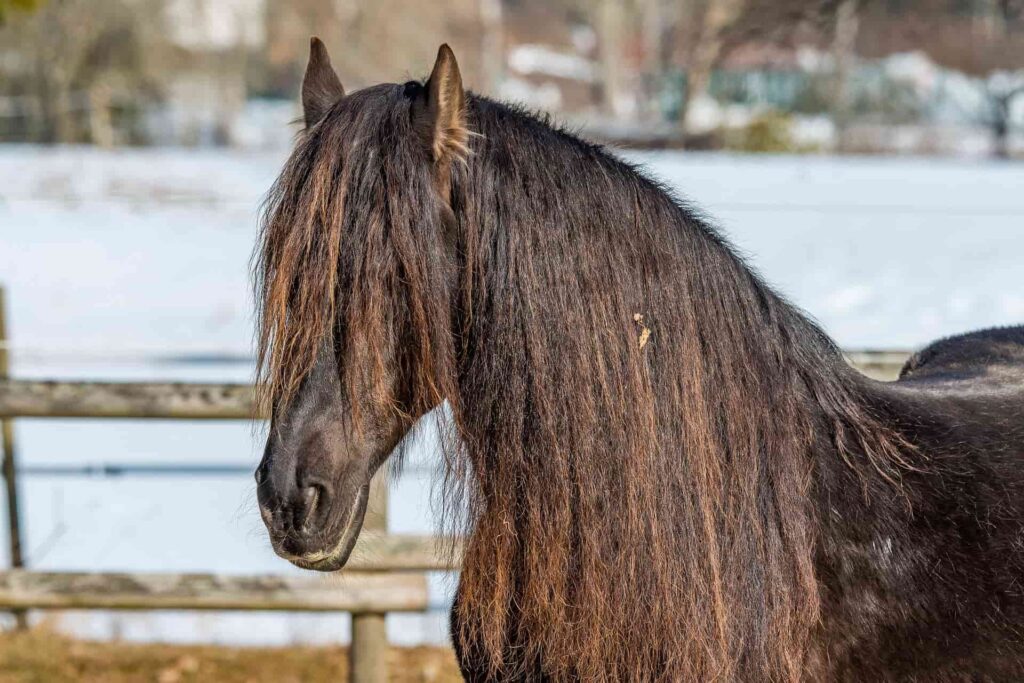
- Height: 57 to 64 inches
- Weight: 1250 to 1400 pounds
- Characteristics: Chestnut coat, flaxen mane, long legs
The history of this German breed can be traced back to the Black Forest region in Baden-Wurttemberg. It was developed in the 15th century and used as an agricultural horse. A light draft horse, this is one of the most critically endangered breeds.
But what’s even more intriguing about the Black Forest Horse is its stunning appearance. It has a long flowing mane and graceful movement, setting it apart from other draft breeds.
The Black Forest horse also has an agreeable character – an aspect that makes it popular among drivers and riders.
10. Schleswig Coldblood
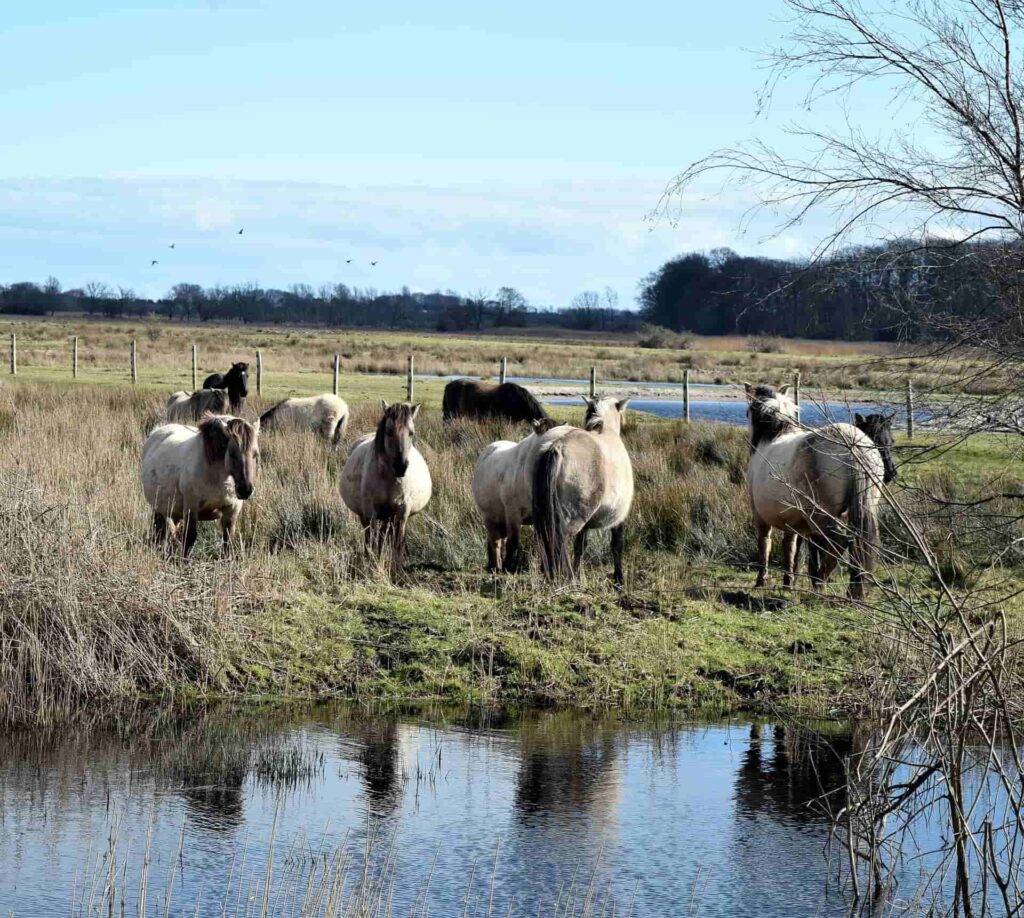
- Height: 60 to 64 inches
- Weight: 1500 to 2000 pounds
- Characteristics: A cresty neck, short head with kind eyes and strong hindquarters; mostly have a flaxen chestnut shade
The Schleswig Coldblood descends from Jutland Peninsula- an area that’s part of both Germany and Denmark. It shares ancestry with Suffolk Punch (one of the biggest horse breeds), and is mostly available in a flaxen chestnut color.
These draft horses are of medium size and are pretty rare. In fact, they’re even listed as an endangered species by the FAO.
The few that exist serve as working horses. You’ll find them being put to use in farms, particularly to pull coaches.
11. South German Coldblood
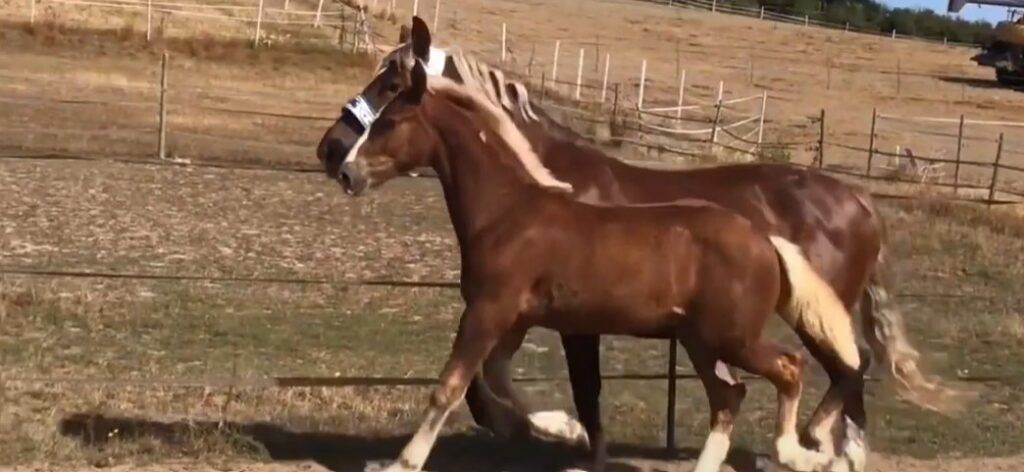
- Height: 64 to 65 inches
- Weight: 1100 pounds
- Characteristics: Medium-weighted head with expressive eyes, hard hooves
As its name implies, this horse originates from Bavaria in southern Germany. It has an almost identical ancestry with Austrian Noriker, a mottled draft horse that comes from the Alps.
The South German Coldblood was originally bred as a working horse to help in the agricultural sector.
But, if you encounter it in Germany today, you’ll likely see it being used for recreational purposes. Thanks to its calm nature, it’s suitable breed for activities such as trail riding, dressage and eventing.
German Ponies
If you’re looking to buy a horse for a toddler or younger ride, an adult version might be intimidating or too difficult to handle. In such situations, you need a German Pony such as:
12. German Riding Pony

- Height: 53 to 57 inches
- Weight: 772 to 882 pounds
- Characteristics: small head with friendly eyes, medium-lock and well-proportioned neck.
The German Riding Pony is also popularly known as the Deutsche Reitpony.
Like most ponies, German Riding Ponies have a miniature size. In fact, they’re often described as the small versions of their German Warmblood cousins.
The German Riding Pony owes its heritage to four main breeds. These are the Welsh Ponies, Anglo-Arabs, Arabians and Thoroughbreds. Breeders were trying to create a breed that would be similar but smaller than the German warmblood horse.
This resulted in the German Riding Ponies that you see today. These horses have an average height of 53 to 57 inches, and come in black, brown or bay colors. Their warm character makes them perfect for use as children’s ponies.
13. Dülmen Pony
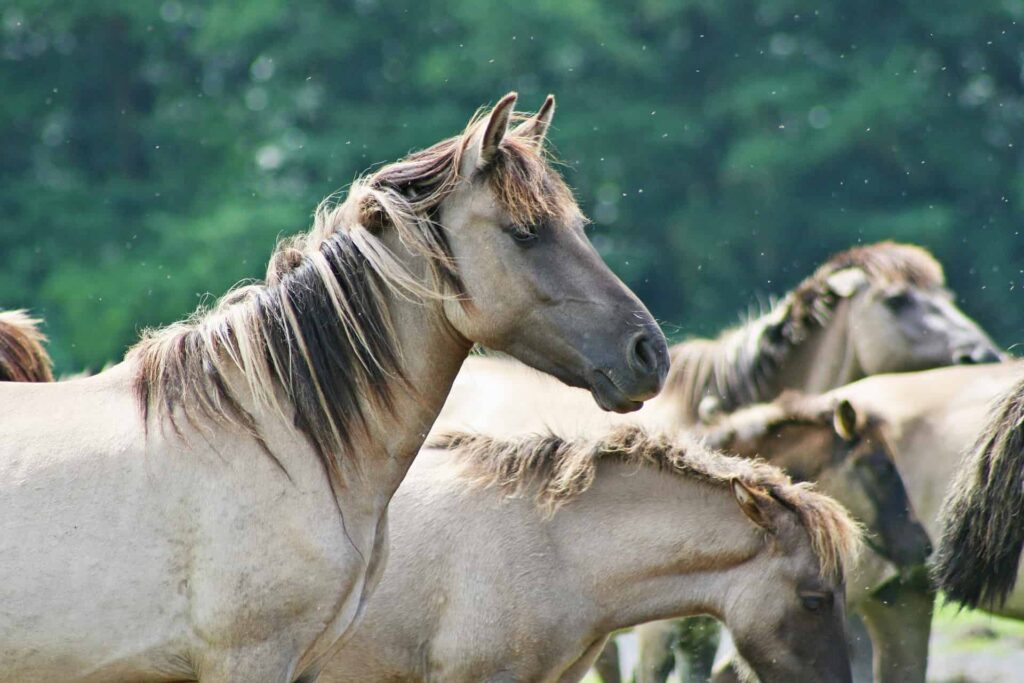
- Height: 48 to 52 inches
- Weight: Unspecified
- Characteristics: Muscular, sloping hindquarters, rounded hooves, medium head and a full mane
Originally, it was referred to as the Merfeld wild horse, and rightly so. The Dulmen Pony has been roaming in Westphalia’s countryside since the 14th century.
These horses are pretty small, averaging just 48 to 52 inches. An endangered species, these horses are no longer domesticated. They’re left to herd in the wild till their annual roundup. During the roundup, most of the foals are sold where they wind up being used as kids’ ponies.
14. Aegidienberger
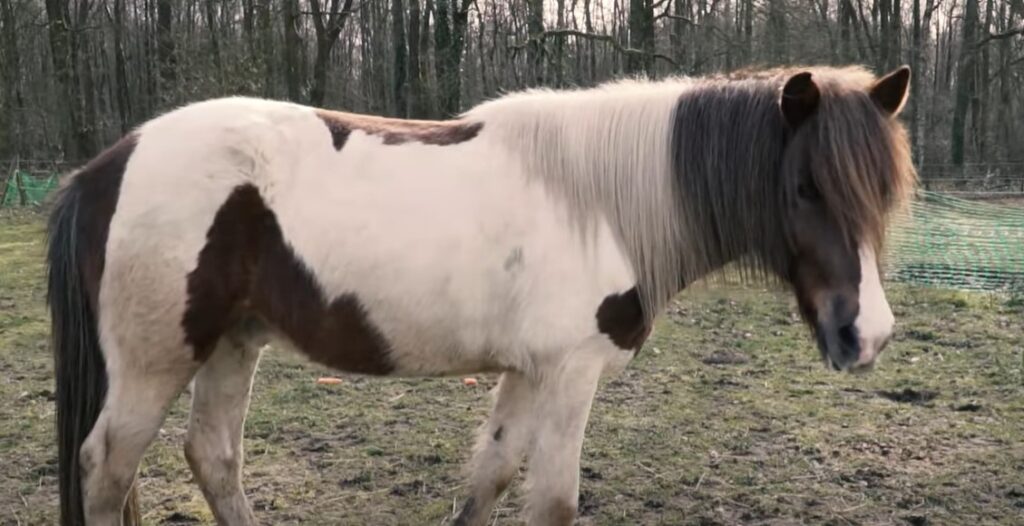
- Height: 52 to 60 inches
- Weight: 1322 to 1543 pounds
- Characteristics: Short but with a strong physique, upright neck and high-set tail
Yet another pony that hails from Germany is the Aegidienberger. Experts believe that it was produced by cross-breeding the Spanish breed horse, Peruvian Paso and the Icelandic horse.
As a result, these horses have well-balanced characteristics. They get their graceful movements from the Paso and their hardiness from the Icelandic breed.
Although it was developed early on, the Aegidienberger ponies attained formal recognition in 1994. Their current population is pretty small. At any one time, you can’t find more than 100 of these ponies.
FAQs
Is Germany known for horses?
Yes, it is. This country has produced some pretty popular breeds such as the Westphalian, Hanoverian and Holsteiner. For more European steeds check out our list of Italian horse breeds also.
Conclusion
Are you planning to buy a horse breed from Germany? Then there are a few points you should consider such as their temperament, grooming requirements, size and disposition. You may also want to seek veterinary advice when it comes to their overall health.
But generally, most of these horses are hardy and healthy. So they provide their owners with lifelong companionship. The most common German horse breeds to pick from are: the Holsteiner, Hanoverian, Westphalian, Schleswig Coldblood just to mention a few.
